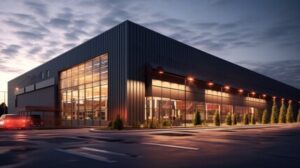The construction of shop buildings is a complex and dynamic process that involves multiple stages, each contributing to the creation of functional and aesthetically pleasing commercial spaces. It starts with a clear vision of what the shop aims to achieve, which shapes every aspect of the construction journey.
Whether it’s a standalone shop or part of a larger commercial complex, the purpose and goals of the shop greatly influence the design, materials, and methods used in construction. Read on Multnomah County Shop Buildings for more information.
The initial phase typically involves site selection and analysis. Choosing the right location is critical as it affects customer accessibility, visibility, and the overall success of the business. Factors like foot traffic, road access, parking availability, and surrounding businesses play a crucial role in this decision. A thorough site analysis ensures that the selected location meets zoning regulations, environmental guidelines, and other legal requirements that govern commercial construction.
Once the site is selected, detailed planning and design begin. Architects and engineers collaborate to create blueprints that align with the shop’s purpose while adhering to safety and building codes. The design phase focuses on optimizing the space for customer flow, product display, and operational efficiency. Attention is given to aspects like entrance placement, window displays, storage areas, and checkout counters to enhance the shopping experience. Engineers focus on structural integrity, ensuring the building can withstand environmental pressures and meet safety standards.
Material selection is another crucial aspect of shop building construction. The choice of materials impacts the building’s durability, aesthetics, energy efficiency, and overall cost. Depending on the design and budget, materials like steel, concrete, wood, and glass are used to create structures that are both functional and visually appealing. Sustainable materials are increasingly popular, contributing to energy efficiency and environmental conservation.
The construction phase begins with site preparation, which includes clearing the land, leveling the ground, and setting up temporary facilities for workers. The foundation is then laid, forming the base that supports the entire structure. Foundations vary based on soil conditions, building size, and design requirements, but they must be strong and stable to ensure the building’s longevity.
Following the foundation, framing is constructed to form the skeleton of the building. This includes erecting beams, columns, and floor systems that define the shop’s layout. Walls, roofing, and floors are installed next, providing the basic structure. Exterior finishes, such as cladding and roofing materials, are added to protect the building from weather elements and contribute to its aesthetic appeal.
Interior construction focuses on creating functional and inviting spaces. Walls are partitioned to define areas like sales floors, storage rooms, and offices. Electrical systems, plumbing, and HVAC (heating, ventilation, and air conditioning) are installed to ensure the shop is comfortable and operational. Lighting design plays a significant role in shop buildings, highlighting products, creating ambiance, and enhancing the customer experience.
Finishing touches bring the shop to life. Flooring, painting, shelving, and display fixtures are installed to create an attractive and functional retail environment. Signage is added to guide customers and reinforce branding. Attention to detail during this stage ensures the shop is both practical for daily operations and appealing to customers.
Safety and compliance are integral throughout the construction process. Regular inspections are conducted to ensure the building meets all safety codes, fire regulations, and accessibility standards. These inspections help identify potential issues early, allowing for corrections before the shop opens to the public.
Sustainability has become a key consideration in modern shop building construction. Energy-efficient designs, eco-friendly materials, and sustainable building practices are prioritized to reduce environmental impact. Features like energy-efficient lighting, solar panels, and advanced insulation contribute to lower operating costs and a smaller carbon footprint.
Technology integration is another important aspect. Modern shop buildings often include advanced systems for security, lighting control, and energy management. Smart building technologies allow for automation and remote control of various systems, enhancing efficiency and convenience for shop owners.
Project management plays a critical role in ensuring the construction process stays on schedule and within budget. Effective coordination between architects, engineers, contractors, and suppliers is essential for smooth progress. A project manager oversees timelines, budgets, quality control, and risk management, ensuring that the final result meets the initial vision and standards.
After construction is complete, a thorough inspection is conducted before the shop can open its doors. Any remaining issues are addressed, and final approvals are obtained. Once operational, regular maintenance is necessary to keep the shop in optimal condition. This includes routine inspections, repairs, and updates to systems and fixtures.
In conclusion, constructing shop buildings involves a meticulous process that balances functionality, aesthetics, safety, and sustainability. Every stage, from site selection to finishing touches, requires careful planning and execution to create a space that meets the needs of both businesses and customers. With advancements in materials, technology, and sustainable practices, modern shop buildings are designed to be efficient, attractive, and adaptable to evolving market demands. These structures not only serve as commercial spaces but also contribute to the local economy and community, making them an essential part of urban development and commerce.
